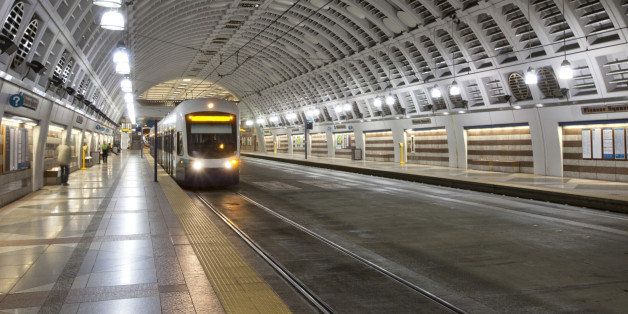
The Obama Administration is optimistic about the promise of driverless vehicles to make transportation safer -- except when it comes to trains.
"We are bullish on automated vehicles," Transportation Secretary Anthony Foxx said earlier this year. Indeed, President Obama in his 2017 budget proposed spending $4 billion in taxpayer funds to subsidize the emergent driverless-car industry.
A move toward greater automation would lead to safety benefits in the rail industry, too. And yet a sweeping new proposed regulation coming out of Secretary Foxx's department is poised to mandate not one -- but two -- operators in most trains, despite the department's explicit acknowledgement that it "cannot provide reliable or conclusive statistical data" linking multiple-person crews with increased safety.
There's a better way to achieve safety goals through safety technology that already exists, and that does not yet exist, but should be encouraged.
If anything, rail is the ideal innovation platform in which to support and advance driverless technology. Trains operate in a largely single-file, fixed track, highly restricted environment. That's why passenger trains are far less likely than cars to get into accidents. Indeed, government statistics show that the ratio of injuries on the roads versus injuries on the rails is 304 - 1.
The problem lies in the mismatch between the tendency of the regulatory bureaucracy to impose one-size-fits-all solutions, and the reality that the best solutions come from experimentation with multiple, competing approaches. Instead of mandating two onboard employees per train -- or even one -- the government should simply focus on a measurable safety goal commensurate with the relevant safety interest without prescribing solutions that may be outdated, or even counterproductive.
That is, in fact, the regulatory approach that the federal government has taken with its ENERGY STAR program. The EPA sets realistic requirements for energy efficiency that consumer products must meet to earn the ENERGY STAR label, but it's up to manufacturers to devise new technologies in order to achieve these standards. The result: companies compete, engineers innovate, and we all get a cleaner environment.
It's unclear why the rule-writers at the Federal Railroad Administration aren't adopting that same, proven model for rail-safety rules. The good news is there's still time for them to change course and abide by the Obama Administration's 2011 directive that regulatory agencies avoid "mandates and outright prohibitions" in favor of approaches that "encourage innovation and growth as well as competition among regulated entities."
The FRA should amend its rule to remove arbitrary mandates on the number of crew members required onboard a train -- and instead look to safety goals that encourage innovation and competition, and thereby serve the public interest.
Otherwise, we risk stifling innovation and technology, and also falling behind other countries like France and Germany, already way ahead of us in the development of safe, autonomous rail systems. Let's not let the innovation train leave the station without the United States on board.